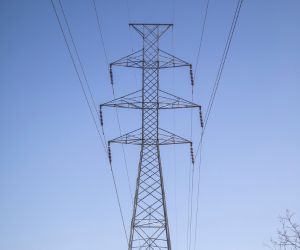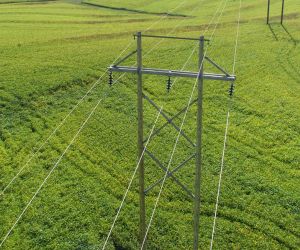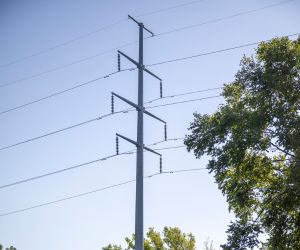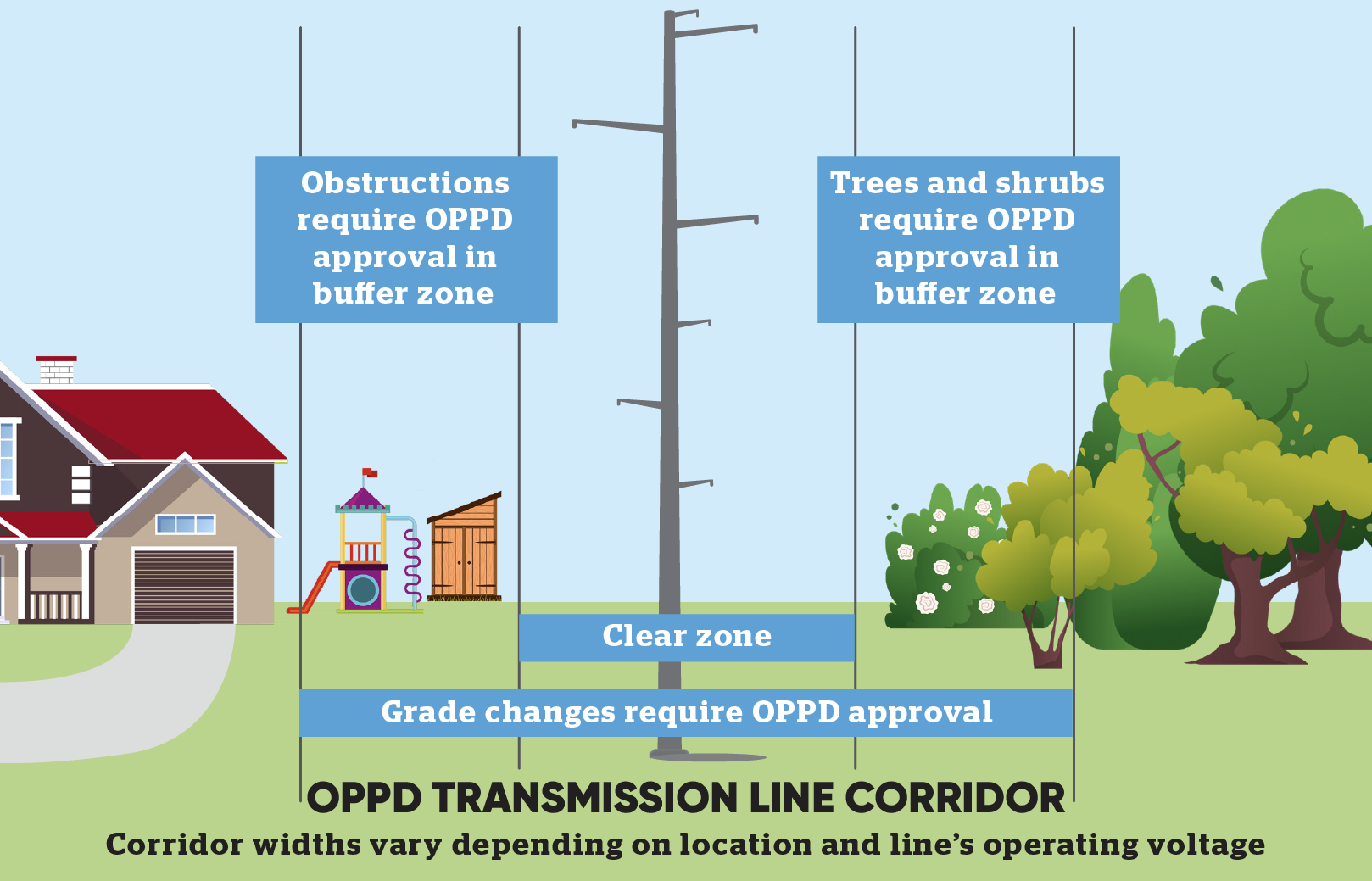
Our Responsibility
OPPD is responsible for working with customers to ensure that our transmission corridors are clear of trees, structures and other vegetation that would be a risk to safe and reliable operations.
Federal, regional and electric industry regulations and standards require minimum safety clearances to ensure vegetation does not come into contact with high-voltage overhead transmission lines.
If vegetation located in a transmission corridor is not compatible with the safe operation of the system, it can result in widespread electric power outages (blackouts) and/or unsafe conditions for the public.
About Transmission Lines
Transmission lines are high-voltage and extra high-voltage power lines that are the backbones of the OPPD electric system. They act as a freeway for large amounts of power to flow over thousands of miles between substations in OPPD’s territory and the larger interconnected grid in the region.
OPPD’s transmission system consists of a variety of line sizes, shapes and voltages, which are vital to the reliability of our system. OPPD is responsible for ensuring that our transmission corridors are clear of trees, structures and other vegetation that would be a risk to safe and reliable operations. We will also work with customers who would like to request grading changes, encroachments & easement releases within transmission corridors.



Understanding Easement, Corridor & Encroachment
OPPD Easement: An easement is a right, privilege or interest that OPPD has in the land of another. This right allows OPPD to construct, operate and maintain transmission facilities within the easement area.
Transmission Corridor: The designated area within and around the OPPD easement established to ensure safe and efficient operation of transmission lines.
Encroachment: Any non-OPPD use or occupancy of the easement area that has not been permitted in writing by OPPD. This includes buildings, structures, trees or any other obstructions that physically intrude upon the easement.
Maintaining Transmission Corridors
OPPD has a right to manage property below our transmission lines. We may trim or remove vegetation in or adjacent to the corridor to eliminate danger. This includes trees that could potentially fall within 15 feet of power lines. Corridor widths depend mainly on the size of the power line and typically range from 50 to 200 feet.
OPPD maintains more than 1,350 miles of metropolitan and rural transmission corridors from southeast Nebraska to northeast Nebraska. Our efforts may include:
- Trimming and removing trees that threaten the safe and reliable operation of the electric transmission system.
- Mowing and applying low-volume herbicide to manage tall growing woody vegetation.
- Inspecting and requiring the removal of structures that have been built in the corridor without OPPD approval.
These periodic maintenance activities are necessary to provide safe and reliable service to all customers within and outside of OPPD’s service territory. The frequency of maintenance activities and inspections is determined by many factors as we prudently manage resources across a wide variety of OPPD projects.
Generally, landowners who have a transmission corridor on their property should obtain prior approval from OPPD before planting a tree or building a structure, parking lot or other structure in a transmission line corridor. Pools are never allowable. The following is a good rule of thumb:
- Avoid trees or shrubs adjacent to line structures and support wires.
- Check with OPPD before planting a tree or shrub in other areas within the corridor. The height of full-grown vegetation matters.
- Proceed with planting grasses and wildflowers. They are allowed without restriction.
- Plant vegetation within or along the immediate edge of the corridor at your own risk. It may be necessary to remove vegetation if it interferes with emergency restoration, line-maintenance or line-construction, and OPPD’s needs may change over time.
- Avoid building decks, playsets, pools, fountains, sheds, garages or any other structure within the transmission corridor without OPPD approval.
- Do not change the grading of the land beneath a transmission line without OPPD approval. OPPD designs lines with specific clearances for safety.
Request Grading Changes, Encroachments & Easement Releases
OPPD works with property owners and customers to maintain the transmission corridors. Property owners and customers who want to develop property within the corridor, whether it’s adding trees or building a deck, should reach out to OPPD.
OPPD evaluates safety and reliability first. If your plans do not create safety or reliability issues, we may allow you to sign a waiver that allows you to proceed with your plans as long as you are willing to assume any risk.
- Grading change request
- Encroachment request (for buildings, structures, trees or any other obstructions)
- Easement release request
Still Have Questions?
Check out our frequently asked questions. If you don't find what you're looking for, please contact OPPD's Real Property and Land Management team at LandManagement@oppd.com or 531-226-3062.


